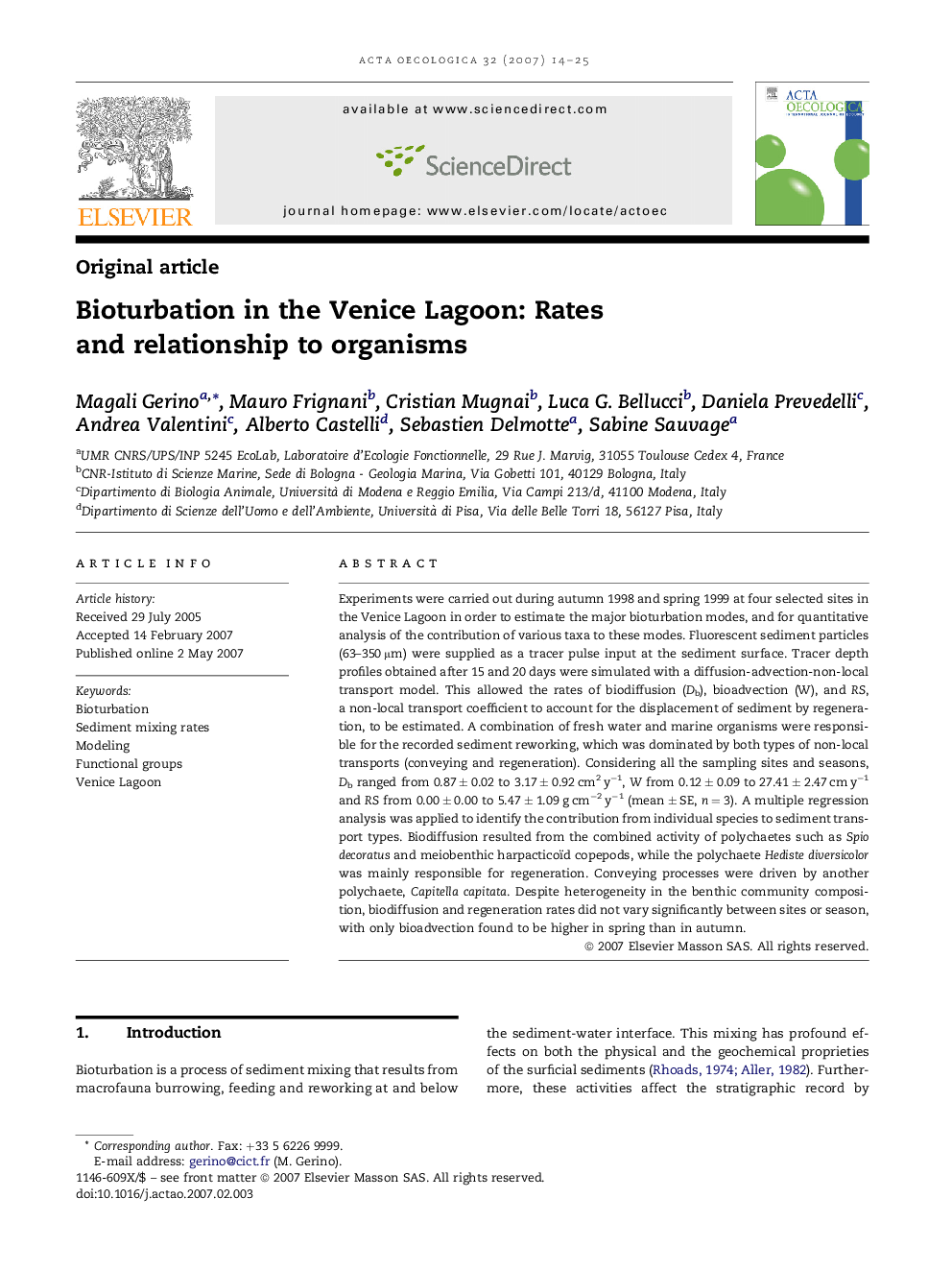| Article ID | Journal | Published Year | Pages | File Type |
|---|---|---|---|---|
| 4381613 | Acta Oecologica | 2007 | 12 Pages |
Abstract
Experiments were carried out during autumn 1998 and spring 1999 at four selected sites in the Venice Lagoon in order to estimate the major bioturbation modes, and for quantitative analysis of the contribution of various taxa to these modes. Fluorescent sediment particles (63-350 μm) were supplied as a tracer pulse input at the sediment surface. Tracer depth profiles obtained after 15 and 20 days were simulated with a diffusion-advection-non-local transport model. This allowed the rates of biodiffusion (Db), bioadvection (W), and RS, a non-local transport coefficient to account for the displacement of sediment by regeneration, to be estimated. A combination of fresh water and marine organisms were responsible for the recorded sediment reworking, which was dominated by both types of non-local transports (conveying and regeneration). Considering all the sampling sites and seasons, Db ranged from 0.87 ± 0.02 to 3.17 ± 0.92 cm2 yâ1, W from 0.12 ± 0.09 to 27.41 ± 2.47 cm yâ1 and RS from 0.00 ± 0.00 to 5.47 ± 1.09 g cmâ2 yâ1 (mean ± SE, n = 3). A multiple regression analysis was applied to identify the contribution from individual species to sediment transport types. Biodiffusion resulted from the combined activity of polychaetes such as Spio decoratus and meiobenthic harpacticoïd copepods, while the polychaete Hediste diversicolor was mainly responsible for regeneration. Conveying processes were driven by another polychaete, Capitella capitata. Despite heterogeneity in the benthic community composition, biodiffusion and regeneration rates did not vary significantly between sites or season, with only bioadvection found to be higher in spring than in autumn.
Related Topics
Life Sciences
Agricultural and Biological Sciences
Ecology, Evolution, Behavior and Systematics
Authors
Magali Gerino, Mauro Frignani, Cristian Mugnai, Luca G. Bellucci, Daniela Prevedelli, Andrea Valentini, Alberto Castelli, Sebastien Delmotte, Sabine Sauvage,
